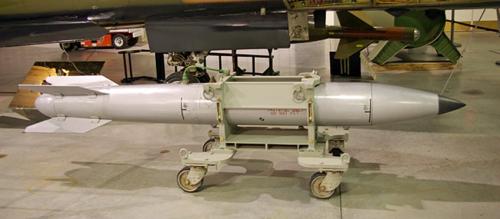 From Spiegel: Germany’s foreign minister has called for the removal of Cold War legacy nuclear weapons being stored here, but some in Washington may have other plans. The US Department of Energy is requesting a budget of close to $2 billion to modernize the country’s oldest models of nuclear weapons, including those being kept in Germany.
From Spiegel: Germany’s foreign minister has called for the removal of Cold War legacy nuclear weapons being stored here, but some in Washington may have other plans. The US Department of Energy is requesting a budget of close to $2 billion to modernize the country’s oldest models of nuclear weapons, including those being kept in Germany.
In a move that could have an impact on the future of nuclear weapons stored in Germany and other parts of Europe, the United States Department of Energy has included requests in its latest budget proposal for funding to modernize parts of the country’s aging nuclear arsenal — a move that would seem to contradict the vision of a nuclear weapons-free world President Barack Obama announced last year.
From 2011 to 2015, the agency wants to allocate close to $2 billion to push forward plans to modernize its arsenal of B-61 nuclear bombs. Some of these weapons are being kept in Europe, including some at storage facilities at the German air force base in Büchel. In total, the US Air Force still has around 150 strategic B-61 bombs in its active arsenal as well as around 400 non-strategic models and a reserve of around 200 further non-strategic bombs…
The NNSA’s budget proposal first envisions a feasibility study into the modernization options for the "oldest nuclear weapons in the enduring stockpile," the B-61s. The study is expected to look into the possibilities for a "life extension" of the bombs’ "nuclear and non-nuclear" components — as well as for "re-using" the "pit," the bomb’s core nuclear components.
In addition, the weapons — which are carried by dual capable European Tornado or American F-15E and F-16 C/D fighter bomber aircraft — would be adapted to make them compatible with the next generation of nuclear-capable fighter jets, such as the US Joint Strike Fighter. After completion of the feasibility study and the selection of components for the modernization, their development and the Life Extension Program would begin. The program is the single biggest line-item for the proposed 2011 NNSA budget. It is expected to end with the development of what would largely be a new nuclear weapon: the B-61, modification 12. (photo: USAF)
Image: usaf_spiegel.jpg
